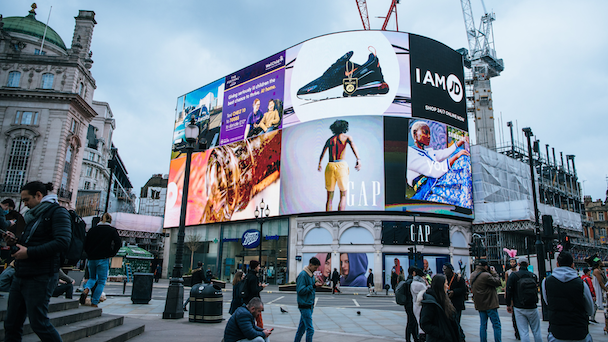Out-of-home advertising environments are redefining brand safety
Brands aren’t taking full advantage of an effective but often misunderstood approach to modern advertising, argues Quotient’s Norm Chait.

/ Tania Mousinho
Outdoor advertising such as static billboards has existed for decades, but the rapid acceleration of the digital advertising industry has resulted in a more innovative approach for marketers to reach their target audiences in the physical world through programmatic digital out-of-home (DOOH) advertising.
With the DOOH channel expected to reach a market size of over $55bn by 2028, according to data published in Digital Journal, a major consideration for advertisers in the space is the ability to ensure that inventory verification capabilities can effectively safeguard a brand’s reputation and keep it from appearing in unsafe environments that go against a company’s values.
The vast majority of out-of-home spend is usually planned out by dedicated out-of-home investment teams. As these marketers’ tactics continue to evolve from traditional direct buying to programmatic optimization, there’s still a bit of a learning curve across the entire advertising industry when it comes to understanding how impactful, effective and hyper-granular DOOH advertisements can be.
The capabilities allow DOOH strategy to go far beyond general brand awareness. Understanding the depth to which DOOH can control key marketing factors allows brands to do more than what has historically been available in the marketplace.
Advertisement
Breaking through the cluttered media landscape
With digital technologies making it easier to measure and manage campaigns, advertisers can now leverage sophisticated brand verification capabilities that help ensure their content is displayed in high-quality, brand-safe environments. These include digital roadside displays, billboards, street furniture like bus shelters, kiosks or even gas pump screens. Transacting programmatically through a dedicated platform narrows down the right screens and locations based on desired audiences.
Capabilities like this have helped redefine brand safety in the DOOH space, making it easier for advertisers to buy and verify quality inventory with confidence. Previously, brands were hesitant to adopt DOOH because they couldn’t apply the same digital best practices to campaign delivery and measurement they were used to across a rich mix of digital formats. Advertisers were unaware that these capabilities were available while technologies were becoming more sophisticated at the same time.
Advertisement
Brands can now use these DOOH verification and intelligence tools to filter locations and buy personas to ensure that their content is displayed in environments that are aligned with their values and image. It’s simply bringing an old-school analog mindset and updating it to the granular digital age. Madison Avenue executives once used content adjacency to their advantage in magazines and still do to a certain extent. For example, agencies have made sure that an ad for an airline wasn’t displayed on a page adjacent to a story about a plane crash, or a car ad next to a feature story about faulty auto parts.
Similarly, if an advertiser wants to target a family-friendly audience, they can use verification tools to filter out DOOH formats so their content avoids being displayed next to a liquor store. Brands targeting a socially conscious audience can pick and choose verification characteristics to avoid proximity to places like casinos or bars.
DOOH tools can reveal that, for example, people who pass a particular billboard in Chicago have a higher propensity to buy laundry detergent and, from a measurement perspective, can ensure enough impressions are running in the market.
By leveraging digital insights, brands can even change messaging to be in line with available data and real-time triggers, allowing them to pivot to even more personalized out-of-home experiences. This capability creates additional opportunities across a range of products and repeat purchases for targeted customers likely to take action. Checking the accuracy of metrics such as audience size and pre-vetted locations to ensure that ads are effective means brands are getting the most value for their investment without playing the costly guessing game.
DOOH as a next-step strategy
The rise of digital technologies and programmatic buying has helped redefine brand safety in the DOOH space. With brand verification capabilities, advertisers can now buy quality inventory with confidence, knowing that their content is being displayed in environments that are aligned with what their brand stands for and how they want desired customers to perceive the brand.
By using these tools, advertisers can also avoid controversial or potentially offensive environments, ensuring that their campaigns are delivered both effectively and efficiently.
Norm Chait is senior director and OOH practice lead at Quotient.